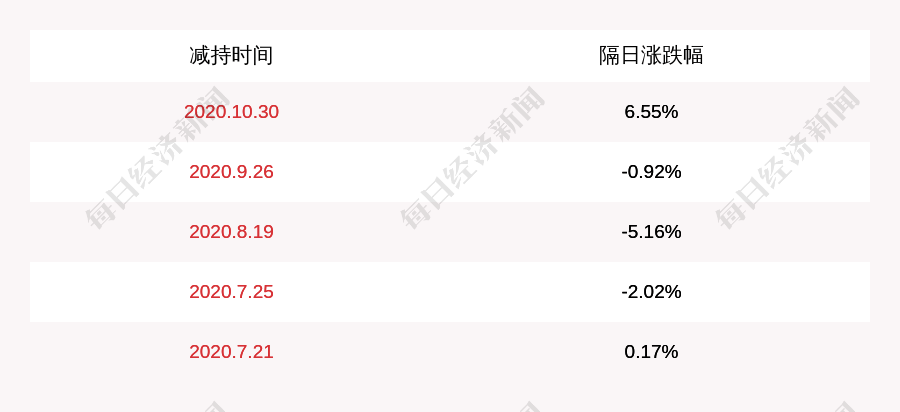第дәҢдёӘеҸӮж•° FileVisitor иў«з§°дёәж–Ү件и®ҝй—®еҷЁжҺҘеҸЈ пјҢ е®ғе®һзҺ°иө·жқҘйқһеёёеӨҚжқӮ пјҢ иҰҒе®һзҺ° 5 дёӘж–№жі•е‘ў пјҢ дҪҶе№ёеҘҪ JDK зҡ„и®ҫи®ЎиҖ…жҸҗдҫӣдәҶдёҖдёӘй»ҳи®Өзҡ„е®һзҺ°зұ» SimpleFileVisitor пјҢ еҰӮжһңжҲ‘们еҸӘжғід»Һзӣ®еҪ•ж ‘дёӯжүҫеҲ° txt еҗҺзјҖзҡ„ж–Ү件 пјҢ еҸҜд»Ҙиҝҷж ·еҒҡпјҡ
// зӣёеҜ№и·Ҝеҫ„Path dir = Paths.get("chenmo");try { Files.walkFileTree(dir, new SimpleFileVisitor<Path>() { @Override public FileVisitResult visitFile(Path file, BasicFileAttributes attrs) { if (file.toString().endsWith(".txt")) { System.out.println(file.getFileName()); } return FileVisitResult.CONTINUE; } });} catch (IOException e) { e.printStackTrace();}йҖҡиҝҮеҲӣе»әеҢҝеҗҚеҶ…йғЁзұ»жқҘйҮҚеҶҷ SimpleFileVisitor зҡ„ visitFile ж–№жі• пјҢ еҰӮжһңеҗҺзјҖеҗҚдёә txt е°ұжү“еҚ°еҮәжқҘ гҖӮ
04гҖҒж–Ү件зҡ„еҲ йҷӨгҖҒеӨҚеҲ¶гҖҒ移еҠЁ
еҲӣе»әдёҖдёӘж–Ү件йқһеёёзҡ„з®ҖеҚ• пјҢ д№ӢеүҚжҲ‘们已з»ҸдҪ“йӘҢиҝҮдәҶ пјҢ йӮЈд№ҲеҲ йҷӨдёҖдёӘж–Ү件д№ҹеҗҢж ·зҡ„з®ҖеҚ• пјҢ д»Јз ҒзӨәдҫӢеҰӮдёӢпјҡ
Files.delete(file);Files.deleteIfExists(file);дҪҝз”Ё Files.delete() еҲ йҷӨж–Ү件д№ӢеүҚжңҖеҘҪдҪҝз”Ё Files.exists() еҲӨж–ӯж–Ү件жҳҜеҗҰеӯҳеңЁ пјҢ еҗҰеҲҷдјҡжҠӣеҮә NoSuchFileExceptionпјӣFiles.deleteIfExists() еҲҷдёҚз”Ё гҖӮ
еӨҚеҲ¶ж–Ү件д№ҹдёҚеӨҚжқӮ пјҢ д»Јз ҒзӨәдҫӢеҰӮдёӢпјҡ
Path source = Paths.get("жІүй»ҳзҺӢдәҢ.txt");Path target = Paths.get("жІүй»ҳзҺӢдәҢ1.txt");Files.copy(source, target);移еҠЁж–Ү件е’ҢеӨҚеҲ¶ж–Ү件йқһеёёзӣёдјј пјҢ д»Јз ҒзӨәдҫӢеҰӮдёӢпјҡ
Path source = Paths.get("жІүй»ҳзҺӢдәҢ.txt");Path target = Paths.get("жІүй»ҳзҺӢдәҢ1.txt");Files.move(source, target);05гҖҒеҝ«йҖҹең°иҜ»еҶҷж–Ү件
NIO 2.0 жҸҗдҫӣдәҶеёҰжңүзј“еҶІеҢәзҡ„иҜ»еҶҷиҫ…еҠ©ж–№жі• пјҢ дҪҝз”Ёиө·жқҘд№ҹйқһеёёзҡ„з®ҖеҚ• гҖӮеҸҜд»ҘйҖҡиҝҮ Files.newBufferedWriter() иҺ·еҸ–дёҖдёӘж–Ү件缓еҶІиҫ“е…ҘжөҒ пјҢ 并йҖҡиҝҮ write() ж–№жі•еҶҷе…Ҙж•°жҚ®пјӣ然еҗҺйҖҡиҝҮ Files.newBufferedReader() иҺ·еҸ–дёҖдёӘж–Ү件缓еҶІиҫ“еҮәжөҒ пјҢ йҖҡиҝҮ readLine() ж–№жі•иҜ»еҮәж•°жҚ® гҖӮд»Јз ҒзӨәдҫӢеҰӮдёӢ гҖӮ
Path file = Paths.get("жІүй»ҳзҺӢдәҢ.txt");try (BufferedWriter writer = Files.newBufferedWriter(file, StandardCharsets.UTF_8)) { writer.write("дёҖдёӘжңүи¶Јзҡ„зЁӢеәҸе‘ҳ");} catch (Exception e) { e.printStackTrace();}try (BufferedReader reader = Files.newBufferedReader(file, StandardCharsets.UTF_8)) { String line; while ((line = reader.readLine()) != null) { System.out.println(line); }} catch (Exception e) { e.printStackTrace();}06гҖҒйҮҚиҰҒпјҡејӮжӯҘ I/O ж“ҚдҪң
е®һиҜқе®һиҜҙеҗ§ пјҢ дёҠйқўжҸҗеҲ°зҡ„йӮЈдәӣйғҪз®—жҳҜ NIO 2.0 зҡ„з”ңзӮ№ пјҢ иҖҢејӮжӯҘ I/O ж“ҚдҪңпјҲд№ҹз§° AIOпјүжүҚз®—жҳҜзңҹжӯЈйҮҚиҰҒзҡ„еҶ…е®№ гҖӮејӮжӯҘ I/O ж“ҚдҪңеҸҜд»Ҙе……еҲҶеҲ©з”ЁеӨҡж ё CPU зҡ„зү№зӮ№ пјҢ дёҚйңҖиҰҒеҶҚеғҸд»ҘеүҚйӮЈж ·еҗҜеҠЁдёҖдёӘзәҝзЁӢжқҘеҜ№ I/O иҝӣиЎҢеӨ„зҗҶ пјҢ е…Қеҫ—йҳ»еЎһдәҶдё»зәҝзЁӢзҡ„е…¶д»–ж“ҚдҪң гҖӮ
ејӮжӯҘ I/O ж“ҚдҪңзҡ„ж ёеҝғжҰӮеҝөжҳҜеҸ‘иө·йқһйҳ»еЎһж–№ејҸзҡ„ I/O ж“ҚдҪң пјҢ еҪ“ I/O ж“ҚдҪңе®ҢжҲҗж—¶йҖҡзҹҘ гҖӮеҸҜд»ҘеҲҶдёәдёӨз§ҚеҪўејҸпјҡFuture е’Ң Callback гҖӮеҰӮжһңжҲ‘们еёҢжңӣдё»зәҝзЁӢеҸ‘иө· I/O ж“ҚдҪң并иҪ®еҫӘзӯүеҫ…з»“жһңж—¶ пјҢ дёҖиҲ¬дҪҝз”Ё Future зҡ„еҪўејҸпјӣиҖҢ Callback зҡ„еҹәжң¬жҖқжғіжҳҜдё»зәҝзЁӢжҙҫеҮәдёҖдёӘдҫҰжҹҘе‘ҳпјҲCompletionHandlerпјүеҲ°зӢ¬з«Ӣзҡ„зәҝзЁӢдёӯжү§иЎҢ I/O ж“ҚдҪң пјҢ ж“ҚдҪңе®ҢжҲҗеҗҺ пјҢ дјҡи§ҰеҸ‘дҫҰжҹҘе‘ҳзҡ„ completed жҲ–иҖ… failed ж–№жі• гҖӮ
1пјүFuture
е…ҲжқҘзңӢдёҖдёӘзӨәдҫӢ пјҢ д»Јз ҒеҰӮдёӢпјҡ
public static void main(String[] args) throws IOException, InterruptedException, ExecutionException { Path file = Paths.get("жІүй»ҳзҺӢдәҢ.txt"); AsynchronousFileChannel channel = AsynchronousFileChannel.open(file); Future<Integer> result = channel.read(ByteBuffer.allocate(100_000), 0); while (!result.isDone()) { System.out.println("дё»зәҝзЁӢ继з»ӯеҒҡдәӢжғ…"); } Integer bytesRead = result.get(); System.out.println(bytesRead);}1пјүйҖҡиҝҮ AsynchronousFileChannel.open() жү“ејҖдёҖдёӘејӮжӯҘж–Ү件йҖҡйҒ“ channel гҖӮ
2пјүз”Ё Future жқҘдҝқеӯҳд»ҺйҖҡйҒ“дёӯиҜ»еҸ–зҡ„з»“жһң гҖӮ
3пјүйҖҡиҝҮ isDone() иҪ®еҫӘеҲӨж–ӯејӮжӯҘ I/O ж“ҚдҪңжҳҜеҗҰе®ҢжҲҗ пјҢ еҰӮжһңжІЎжңүе®ҢжҲҗзҡ„иҜқ пјҢ дё»зәҝзЁӢеҸҜд»Ҙ继з»ӯеҒҡиҮӘе·ұзҡ„дәӢжғ… гҖӮ
2пјүCallback
е…ҲжқҘзңӢдёҖдёӘзӨәдҫӢ пјҢ д»Јз ҒеҰӮдёӢпјҡ
public static void main(String[] args) throws IOException, InterruptedException, ExecutionException { Path file = Paths.get("жІүй»ҳзҺӢдәҢ.txt"); AsynchronousFileChannel channel = AsynchronousFileChannel.open(file); channel.read(ByteBuffer.allocate(100_000), 0, null, new CompletionHandler<Integer, ByteBuffer>() { public void completed(Integer result, ByteBuffer attachment) { System.out.println(result); } public void failed(Throwable exc, ByteBuffer attachment) { System.out.println(exc.getMessage()); } }); System.out.println("дё»зәҝзЁӢ继з»ӯеҒҡдәӢжғ…");}1пјүйҖҡиҝҮ AsynchronousFileChannel.open() жү“ејҖдёҖдёӘејӮжӯҘж–Ү件йҖҡйҒ“ channel гҖӮ
жҺЁиҚҗйҳ…иҜ»
- еӯҰд№ JAVAзҡ„еҚҒдәҢеӨ§жӯҘйӘӨпјҢеҖјеҫ—дҪ еҖҹйүҙ
- JavaејҖеҸ‘иҖ…еҝ…еӨҮзҡ„9дёӘзҪ‘з«ҷ
- еҰӮдҪ•жӣҙеҘҪзҡ„дҪҝз”ЁJAVAзәҝзЁӢжұ
- Javaз§’жқҖзі»з»ҹе®һжҲҳзі»еҲ—пјҡе•Ҷе“Ғз§’жқҖд»Јз Ғе®һжҲҳ
- Java NIOдёҺI/Oзҡ„еҢәеҲ«еҲ°еә•еңЁе“Әпјҹзј“еҶІеҢәжҳҜд»Җд№Ҳпјҹ
- JavaдёӯBIO,NIO,AIOзҡ„зҗҶи§Ј
- дҪ 们иҜҙзҡ„жҠ–йҹіж•ҲжһңжҳҜжҖҺж ·е®һзҺ°зҡ„пјҒзЁӢеәҸе‘ҳпјҡjavaйқўеүҚйғҪдёҚжҳҜдәӢ
- Javaзҡ„дёӨз§Қи·іиҪ¬иҜӯеҸҘ
- JavaзЁӢеәҸе‘ҳеҝ…еӨҮвҖ”вҖ”Tomcatй…ҚзҪ®жҠҖе·§Top10
- JavaзЁӢеәҸе‘ҳеҝ…еӨҮзҡ„дёҖдәӣжөҒзЁӢеӣҫ


















